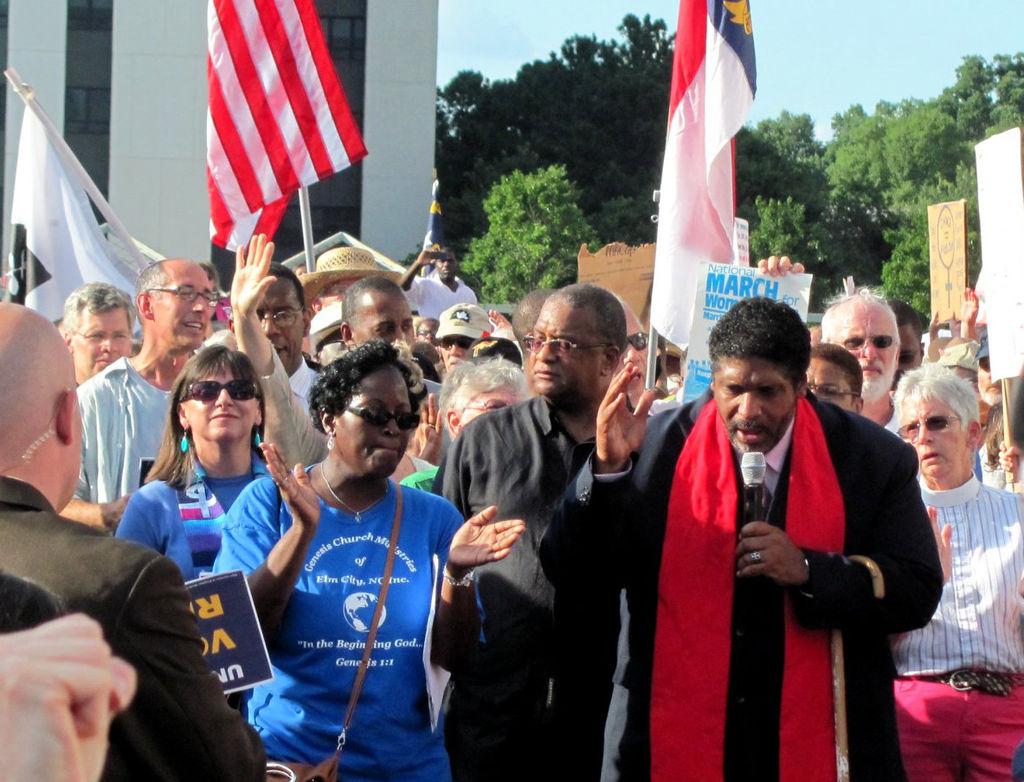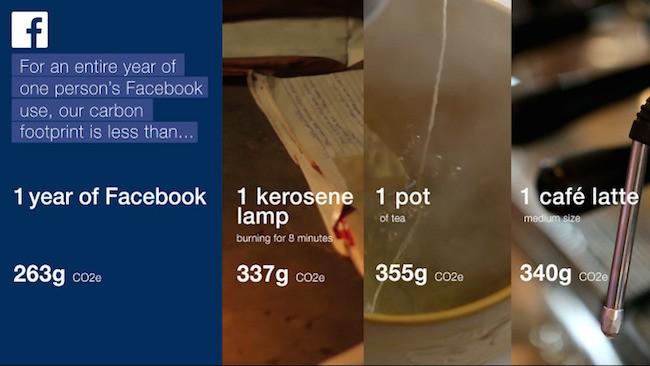Health Issues Highlight the Demand for High Indoor Air Quality


Massachusetts-based Steeplechase Builders was dedicated to building environmentally-friendly homes that consume fewer resources from the start. But a life-changing event highlighted the importance of building healthy green homes.
When Jay Clamenti, Steeplechase’s owner, was recovering from chronic Lyme disease in a medical clinic, he became aware that industrial toxins and mold are systemic body burdens. These pollutants were weakening his immune system and encouraging his Lyme disease to progress.
Lyme disease and other illnesses can act as a trigger, targeting an immune system weakened by pollution. At the clinic, Clamenti learned about the importance of indoor air quality for reducing his exposure to toxins and promoting health and well-being.
The built environment has a large impact on the overall health of occupants. Sick building syndrome, in which occupants experience headaches, respiratory ailments, lack of productivity and other acute conditions, highlights this point. Interestingly, the syndrome is commonly associated with tight building envelopes and poor ventilation.
“I decided I wanted to develop a company that builds green homes, where health is the No. 1 priority, be it water quality, indoor air quality or the products in the home,” Clamenti told 3p. “Installing Zehnder mechanical ventilation systems is my focus at the moment.”
Steeplechase Builders recently retrofitted an expanded Cape Cod home in southern New Hampshire for a couple with two Zehnder energy recovery ventilation (ERV) systems. The house was air-sealed with spray foam insulation a few years ago to make it more energy efficient, but lack of adequate ventilation throughout the home caused poor indoor air quality. The home had visible mold growth within months because of excess indoor moisture and lack of fresh air.
When one spouse became ill, boosting indoor air quality became a major goal for the couple to assist in the recovery process and promote long-term health. As a result, they installed a Zehnder ventilation system to keep mold growth and other indoor toxins from degrading their indoor air quality.
“As the building codes have adopted energy-efficiency criteria, we’re seeing indoor air quality becoming more of an issue,” says Chris Smith, a project manager for Steeplechase Builders. “The building codes seem to underestimate what is needed to maintain a healthy indoor environment within the home once it is made to be airtight. We’re driving toward lower energy costs, but in the end people will save a lot on energy and will be spending that on doctors and medical treatments.”
As homes and buildings become tighter, less air is exchanged with the outside as leaks and gaps are sealed. This allows homes to perform in ways that vary from their original design, making the ventilation system inadequate.
Many homes in the United States use exhaust-only ventilation systems, with exhaust fans in the bathrooms and kitchen. When air exits from the home, new air must enter. If the makeup air is insufficient, exhaust fans cannot function properly.
Historically, houses had enough leaks and gaps to provide this makeup air. When gaps and holes are sealed, however, reduced air movement into the home makes it difficult for exhaust fans to properly remove moisture, fumes and toxins. By contrast, balanced ventilation systems supply and exhaust an equal amount of air. Energy recovery ventilation systems are especially well-suited for homes and buildings with tight building envelopes.
Smith and carpenter Nikos Zafirakis installed a Zehnder ventilation system that addresses the entire approximately 6,000-square-foot home, including the basement. The homeowners now benefit from two ERV systems that improve indoor air quality by removing stale or contaminated air and replacing it with an equal amount of fresh, filtered air. The installation crew was trained by and received technical support from Zehnder America and used the company's equipment and components on the project.
“Zehnder really takes a very big-picture approach to ventilation,” Clamenti said. “Their systems ventilate every room of the house. They are three steps ahead of everyone else. You would need multiple systems to do what we did in this house, instead of one or two systems. People could put one Zehnder unit in their home and ventilate the whole home.”
With heat recovery ventilation (HRV) and ERV systems, one doesn’t need to choose between energy efficiency and indoor air quality, which helps to support Clamenti’s mission of building healthy green homes. In warmer weather, Zehnder ERVs save energy by lowering the temperature of the incoming air, cutting cooling costs. In colder weather, ERVs pre-warm the intake air to reduce heating bills. Zehnder ventilation systems are up to 95 percent efficient, offering significant energy savings.
As homes and buildings have increasingly tight building envelopes and awareness of the impacts on indoor air quality increases, new markets are opening up for companies creating solutions. A recent UL Environment investigation, published in Under the Lens: Claiming Green, highlights that many consumers are choosing green products because of health and safety concerns. In a survey of over 1,000 consumers, 43 percent specifically said they were concerned about indoor air quality. The building codes in many areas do not properly address indoor air quality, yet consumer demand is strong and not being properly met.
Image credit: Pixabay
Sustainable finance at the core of European economic recovery


By Vikas Vij — Capital infusion into sustainable infrastructure and innovation has emerged as an important strategy to drive job creation globally. The direction provided by governments to global markets during the COP 21 summit in Paris was clear that sustainability and environmental concerns will be at the core of future development. Far from being seen as a drag on growth, sustainability is now regarded as an essential component of a recovery process that is more stable and efficient, and better serves the real economy.
According to Achim Steiner, Executive Director of the United Nations Environment Program (UNEP), Europe’s financial system is on the move toward a low-carbon, green economy, backed by individuals as well as institutions. Europe’s financial institutions, most notably its pension funds and insurance companies, are recognizing the long-term benefits of putting sustainability at the heart of their business models. Central banks and regulators are realizing that they have critical role to make this reallocation of capital as orderly as possible.
Institutions, such as the Bank of England, have become part of this changing agenda. Governor Mark Carney has now delivered the first assessment of what climate means for the insurance sector. As chairman of the Financial Stability Board, Carney launched a new industry-led task force to improve climate disclosure, ensuring that investors can make informed decisions.
France also has been a pioneer, delivering a path-breaking Energy Transition law last year. An innovation of this new law is a requirement for investors to disclose how they are managing the transition. New labels are being introduced to help individual consumers choose financial products that are sustainability-oriented. Spain, Portugal and Germany offer further examples of these market transformations.
Italy recently launched a national dialogue on sustainable finance and Sweden has included a new policy goal linking finance with sustainable development in its recent budget. The Dutch central bank, DNB, recently argued for a long-term view, adequate carbon pricing, and more transparency.
At the Union level too, action is underway. More than half of the 42 projects that the European Fund for Strategic Investment approved earlier this year are in sustainability-related areas, including energy and climate action, environmental and resource efficiency, transport, and research and development.
The steps already being taken in Europe are part of a global shift, what UNEP calls a “quiet revolution.” A growing number of countries realize the need to link finance more clearly with social and environmental drivers of long-term prosperity. China, for example, has made green finance part of its new 13th Five Year Plan, and is seeking to raise $400 billion in green investments each year.
Source: Euractiv
Image Credit: Flickr via onuraltin
This article first appeared on Justmeans.
Ben & Jerry's Joins The Battle For Voting Rights with New Flavor


Ben & Jerry's new flavor, EMPOWERMint, is peppermint ice cream with fudge brownies and fudge swirls. As you enjoy your first delicious spoonful, with all that fat and sugar tickling the pleasure centers of your brain, you might notice something funny about the cow mascot on the pint container.
The cow is standing behind a placard that reads "Democracy Is In Your Hands," and it's holding a sugar cone topped with the rotunda of the U.S. Capitol. That's because EMPOWERMint is also the latest move in the company's four-decade campaign to give a voice to the voiceless.
Ben & Jerry's is donating proceeds from sales of their new flavor to the North Carolina chapter of the NAACP and their fight against restrictive voting laws. "I’m excited that we’re working with some amazing partners who are experts in the issue of voting and democracy," said CEO Jostein Solheim. "We want our customers to help us get the Voting Rights Act reauthorized, because democracy doesn't work unless it includes all voices."
"We're very thankful that Ben & Jerry's sought us out," says The Reverend William Barber II, a NAACP board member and chairman of the North Carolina chapter. "They understand that attacks on voting rights are also attacks on the living wage, LGBT rights, access to health care, and the whole strategy of building coalitions to advance the progressive agenda. It's a sad fact that African-Americans in North Carolina have fewer voting rights now than we did in 1965."
Three years ago, the Supreme Court gutted the Voting Rights Act of 1965 by removing a requirement that eight Southern states, Alaska, and some cities get Federal approval before changing their election laws. Several states quickly passed laws that require voters to show IDs, restrict early voting, and similar measures making it harder to cast ballots. North Carolina's new laws were among the strictest.
The NAACP is challenging North Carolina's laws with voter education and get-out-the-vote campaigns; a lawsuit; and the Moral Mondays protest movement, which began in North Carolina and is spreading across the South.
Ben & Jerry's is based in South Burlington, Vermont. It's a long way from the Greenleaf Christian Church in Goldsboro, NC, where Barber serves as pastor. In Vermont, 93 percent of the population is white, a state holiday called Town Meeting Day celebrates direct democratic engagement, and Jim Crow laws are just a historical oddity.
At the urging of the company's independent board, which guides its social mission, Ben & Jerry's began a "learning journey" 14 months ago by inviting racial justice activists to meet employees at company headquarters. Last October, CEO Solheim, board members Jeff Furman and Daryn Dodson, and activist manager Chris Miller met with Congressman John Lewis.
This year, the company has come out in support of same-day voter registration, mail-in voting, and mass protests like Democracy Awakening, a three-day action at the US capitol. The action culminated with the civil resistance arrests of hundreds of people, including company co-founders Ben Cohen and Jerry Greenfield, Furman, and fellow board member Annie Leonard.
Ben & Jerry’s has been speaking out like this for 38 years, and their politics are a core element of their beloved brand. They know that taking forthright stands on controversial issues will offend some potential customers. But moves like these also make loyal customers even more loyal while generating tons of free publicity (like this post).
“The more people get pissed off at us, the more ice cream we sell,” Solheim said in my book. “This is counterintuitive, and it is hard for a big corporation to understand. But it is true beyond a doubt.”
"So my investment in this issue is, quite literally, an investment," he wrote last month. "Our business and most other companies do best when the American people do well. We could call it trickle up economics."
Brad Edmondson is the author of Ice Cream Social: The Struggle for the Soul of Ben & Jerry's (2014).
How Companies Can Support Transgender Employees


Transgender rights have become one of the most-discussed stories this year, even making the cover of Time magazine. Meanwhile, the legal fight continues over North Carolina’s transgender bathroom law. Last week, the Obama administration spoke up with a directive that instructs every public school district in the U.S. to allow transgender students to use restrooms that match the gender with which they identify.
No matter how one feels about this issue (and last week’s New York Times article on the Department of Education’s directive offers a trove of comments), the reality is that transgendered individuals are here to stay. And everyone within an organization, not just those within the human resources department, need to know the practicalities of supporting a newly-transitioning employee — and what is also needed by his or her co-workers.
To that end, TriplePundit spoke with Beck Bailey, the deputy director of employee engagement at the Human Rights Campaign Foundation. He explained that regardless of the debate going on between the feds in Washington, D.C. and North Carolina’s state government in Raleigh, corporate America is actually ahead of much of society when it comes to ensuring a comfortable work environment for transgender employees.
“You might think that the protection of transgender rights is a new, trendy thing,” Bailey told us, “but the truth is that corporate America has been a leader in this space for the inclusion of transgender people.”
Bailey explained that when the HRC launched its Corporate Equality Index for the first time in 2002, only 3 percent of the companies it surveyed had protections related to gender identity. Today, 75 percent of companies reporting to the HRC have transgender protections. “This is important because the laws have not caught up,” Bailey explained, “including the fact that we still have no federal law that protects transgender people in the workplace.”
So, business has taken the lead on this issue, and action is not relegated to “edgy” companies such as Facebook, Google and their peers within the technology sector. Companies in all industries, such as energy, defense and aerospace, continue to adopt inclusive policies for transgender employees -- including Boeing, Chevron, Lockheed Martin, Raytheon and Shell Oil.
Such companies adopted policies in line, or at least similar to, the guidelines and best practices the HRC suggests for fostering transgender inclusion within the workplace. These recommendations include:
Adding gender identity as a protected category
Employment policies that lay out protected categories should include the terms "gender identity or expression" or "gender identity." Such policies should not only be included in employee handbooks available to all of a company’s stakeholders, but also be articulated online.
Clear gender transition guidelines for the workplace
It is not enough to say “gender identity” is included in the non-discrimination policies within a company’s human resources manual. Everyone in a company should be prepared to manage a gender transition.
Protocols that outline the responsibilities and expectations of transitioning employees need to be established in order to manage such a situation so that everyone -- from the transgender employee to his or her supervisor, and that person’s colleagues -- are prepared and confident during this time.
The HRC suggests guidelines that establish who within the organization is helping this person manage his or her transition; what a transgender employee can expect from management during this time; the procedures for implementing workplace changes related to the transition (such as a new email address and when to update personnel records); and a document covering frequently asked questions related to concerns such as dress codes and restroom use.
“If your company hasn’t talked about this at all," Bailey explained during our interview, “then you are really leaving that manager flat-footed and ill prepared for such a conversation.”
Incorporate gender identity into diversity training programs
Such policies should not assume employees are “ignorant.” But the fact is that human resources professionals should ensure their diversity training programs at least avoid awkwardness, or at most, a lawsuit.
Whether such instruction involves individual modules or more comprehensive educational programs that involve external trainers, education programs related to gender identity will depend on the size and need of each individual organization. And when someone transitions on the job, such training is not just about providing insight on transgender issues, but also on emphasizing workplace fairness for all employees from all backgrounds.
Employees and contractors should be made aware of how these policies apply during the day-to-day work environment; board members and company executives may need to know how such policies involving transgender people can enhance a firm’s competitive advantage or reduce risk.
Restroom access for transgender employees
Regardless of the stage of their transition, employees should have unrestricted access to a restroom aligned with his or her gender identity. The kind of facility could depend on local regulations; some jurisdictions, for example, require single-occupant bathrooms to be “gender neutral.” Whatever form these restrooms may take, the HRC has a set of recommended guidelines so that all employees feel comfortable in the workplace.
Dress codes that avoid gender stereotypes
Indeed, dress codes requiring men to wear business suits and women to wear dresses are legal in most places, but such rules still reinforce gender stereotypes. Nevertheless, companies can establish dress codes that emphasize professional attire in order to project a certain image. The key here is consistency -- meaning the dress code applies to all employees fairly and does not favor one gender over the other.
The bottom line
So, the devil’s advocate asks: Why would a company go through all this? Why not have a gender identity policy inserted into the employee manual and be done with it, as this is covering a very small ratio of the working population?
“Bottom line: The business case revolves around attracting and retaining talent,” Bailey said as we wrapped up our interview. “If I want the best mechanical engineer, I don’t want to lose that engineer to a company that is more trans-inclusive than my company. In today’s competition for top employees, being diverse and inclusive is good for talent retention. Most people want to do the right thing, but when we do nothing, that has its own repercussions, as in discouraging employees and causing a chilly atmosphere in the workplace.”
Image credit: Flickr/Ted Eytan
Cotton Production Transparency: Unraveling the Mysterious Supply Chain


It's often said that the fashion industry is one of the dirtiest in the world, second only to big oil. Although this statement may seem impossible, there is some validity to it. This is especially true when it comes to raw materials.
Cotton is a particularly demanding crop with a complex supply. In fact, 20,000 liters of water is often consumed to cultivate the cotton to produce just one T-shirt or pair of jeans. Most cotton is grown on irrigated land to satiate the needs of this thirsty crop, compromising water security in some areas. Although a mere 2.4 percent of cropland is dedicated to cotton, it accounts for 24 percent and 11 percent of the world's pesticide and insecticide use, respectively. Cotton is not the villain, though, as synthetic fibers have their share of sustainability issues as well. In addition, the dying process for cotton and synthetic fabrics alike is highly chemically intensive.
The good news is that there is a growing awareness of the sustainability issues that plague the fashion industry. "Years back, the industry had a feeling that what they don’t know is alright," Anita Chester, head of sustainable raw materials for the C&A Foundation, told TriplePundit. "Everyone is making an effort now to understand what is happening and then to stand up and face it. Brands realize it does matter and are bringing more visibility. It is a topic of discussion in many multi-stakeholder groups. This is a trend that won't go away."
Levi Strauss & Co. demonstrated a strong commitment to transparency when it conducted the first Product Lifecycle Assessment in the apparel industry of its jeans in 2007. This information is posted on the company's website and explores everything from cotton production to consumer care. It also helped LS&Co.to understand the sustainability issues related to its products and enabled the company to take more effective action.
The lifecycle assessment, for example, revealed that 68 percent of the water consumed by Levi's jeans is related to cotton production. To help make LS&Co. products more sustainable, the company is working with the Better Cotton Initiative (BCI), a nonprofit organization that brings a variety of stakeholders in the cotton supply chain together for sustainable cotton production.
Such alliances mean that LS&Co. actually collaborates with competitors to shift the global cotton market. The San Francisco-based brand has also used product labels to reduce wasteful consumer behavior. All LS&Co. jeans now contain care tags reminding customers to: “wash less, wash cold, line dry, donate or recycle.”
LS&Co. took things a step further with the Wellthread Collection, which features Water<Less fabric that uses 65 percent less water in the dying process and 50 percent less for finishing. The entire product is made with closed-loop recycling in mind, and the collection is made in factories that invest in the wellbeing of its workers.
The North Face also took a leap in sustainable sourcing when it introduced the locally-grown hoodie. All the cotton was grown within 150 miles of the corporate headquarters in California, by farmers that use biologically-based techniques to protect land, air and water resources.
"We decided to take a bale of beautiful heirloom cotton and see what we could make with it," Adam Mott, director of sustainability at the North Face, explained during a 2014 interview with TriplePundit. "This created more collaborative, deeper connections with the artisans involved in the textile production and inspired us to think about reducing waste in the design process for this exclusive collection."
Although the brand wasn't entirely successful in meeting its 150-mile goal for the initial hoodie, the project provided valuable lessons in materials sourcing. The North Face expanded its locally-sourced Backyard Project capsule collection this year to include men’s T-shirts, as well as both men’s and women’s full zip and pullover hoodies, all sourced and manufactured within the U.S.
Another organization to follow is the Organic Cotton Accelerator (OCA), which was founded on the premise that "organic cotton production delivers impressive environmental, social and health benefits, enhances responsible business practices, and builds prosperity." The OCA was created in 2014 to ensure that these conditions are understood and improved in a coordinated way, and to grow the organic cotton sector as a whole. Founding members include C&A, the C&A Foundation, H&M, Eileen Fisher, Kering, CottonConnect, Textile Exchange and Inditex.
Cotton has a very complex supply chain, with little traceability as of now. A majority of cotton is grown in developing countries. Lack of transparency in cotton production leads to decreased product integrity, impacting the environment and the well-being of many people.
"Transparency is extremely important because it brings accountability into the system," Chester explained. "It’s a difficult supply chain with many layers."Cotton goes through many hands, from traders to spinners, and there are all sorts of transactions that happen. In the current form, it is not a very transparent supply chain.
"Cotton also travels across borders. Very often what is grown in India will end up in China or Bangladesh."
Less than 1 percent of cotton is grown organically, and this number has actually decreased in recent years, Chester told us. She cites lack of adequate compensation to organic farmers for their efforts as a major driver in this downward trend.
"A brand will create a contract with the first tier in the supply chain and agree on a price with certain raw material costs," Chester explained. "The farmer is the weakest link, and the value doesn’t flow down to the farmer in the way [it] should. People with more clout in the supply chain will maintain higher margins. C&A Foundation wants to collaborate with brands and other stakeholders to make sure farmers are paid a fair price. Brands can help by giving strong signals in their supply chain and incentivizing farmers to grow organic cotton."
Lack of access to non-GMO seeds is also an issue in organic cotton production. As a result, Chester is working with universities and agricultural programs to support breeding programs and to link various stakeholders.
India grows 75 percent of the world's organic cotton, Chester noted. "It’s risky for the industry to have all the organic cotton grown in one area," she explained. "We support projects in China, Pakistan and elsewhere, to diversify where cotton is grown and to help farmers to build their capacity."
As these multi-stakeholder groups work to create greater transparency and more sustainable supply chains, some brands are collaborating to find solutions. Concern about water scarcity, pesticide contamination, farm worker conditions and social justice are bringing brands together to find answers.
The solutions to complex issues are not simple. But brands like LS&Co., the North Face, the Better Cotton Initiative, the C&A Foundation and the Organic Cotton Accelerator are helping the issue of supply chain transparency in the garment industry to advance.
Image credit: Flickr/Kimberley Vardeman
Bonn Climate Talks Set to Work Out COP21 Details


Despite all of the attention garnered by the December COP21 climate talks in Paris, the follow-up meeting this week in Bonn, Germany -- which is crucial to the implementation of the agreement -- has managed to stay below the radar.
The Paris conference attendees set a goal, or actually a pair of goals: 2 degrees Celsius as an absolute cap on global temperature rise, and 1.5 degrees as desirable. But the specific carbon reductions required to meet those goals were not spelled out. Commitments made in Paris would put the world on a trajectory closer to a 3-degree rise.
Everyone agreed that it was a good start, given the level of commitment around the table. But now it’s time to sharpen those pencils. This week, Hoesung Lee, chief scientist at the U.N. Intergovernmental Panel on Climate Change (IPCC), told the Guardian that it is still possible to meet to the 2-degree target. For that to happen, many, including Christiana Figueres, say emissions need to peak by 2020.
The Bonn meeting comes in advance of the COP22 talks, due to take place in Marrakech, Morocco, in November. Some 1,500 delegates are expected to attend. The IPCC hopes to continue the “unprecedented momentum” spurred in Paris.
A note to the participants: Both the president of the Paris COP21, French Environment Minister Segolene Royal, and the incoming president of COP22, Morocco's Foreign Minister Salaheddine Mezouar, said that it is time for a shift "from a focus on negotiation to a focus on implementation and cooperation."
The elephant in the room in Paris was the question of carbon pricing.
A so-called “Climate Action Fair” in Bonn will allow governments to discuss the social and economic value of carbon, and how to minimize emissions in the transportation sector. Other actions include those focused on adaptation and resilience.
The role of “non-state actors” (cities, regions, businesses and investors) is expected to be significant. Their contributions are being captured on the U.N.’s NAZCA (Non-State Actor Zone for Climate Action) portal.
Clean-energy technology will be featured by a consortium of 20 companies. Hydrogen vehicles will be available for test drives.
Still, a major focus must be on government action. Of the 177 countries that have signed the Paris agreement, only 16 have ratified it. The major players, on whom so much depends, are dragging their feet. Still, the main work must happen within those countries as they work out the details behind the high-level commitments they made.
Meanwhile, a number of campaigns around the world are calling attention to the problem and the urgency that is needed to effectively confront it. The rallying cry is: “Break Free From Fossil Fuels.”
Protesters in Germany shut down a coal mine last weekend and blocked a rail line that delivers coal to a power plant, effectively shutting that plant down.
Other actions took place in the Philippines, where the government plans to construct 27 new coal-fired power plants.
In Bangladesh, a rally was held to “kick polluters out of climate policy.” Md. Arifur Rahman, spokesman of SUPRO, the Campaign for Good Governance, said: “We, the people, urge our government leaders to take action in Bonn to eliminate the primary obstacle to more ambitious and aggressive action by showing big polluters the door.”
Meanwhile, a leaking pipe is spewing 20,000 barrels of oil per day into the Gulf of Mexico. We have an awful lot of work to do and not much time left to do it.
Image credit: The Library of Congress: Flickr Creative Commons
Corporate Behemoths Break Down Clean Power Barrier With 60 GW Pledge


There they go again. Last year, major U.S. corporations went toe-to-toe with utilities in the clean power market by snapping up a total of 3 gigawatts in clean-energy buys, and this year they have come roaring back in force.
Upwards of 60 companies hooked up with four nonprofits to launch the Renewable Energy Buyers Alliance, pledging to invest in 60 gigawatts of renewable energy by 2025.
Our capitalist overlords heart clean power
To grasp the significance of this shift in the clean-power marketplace, consider that until recent years utilities held a virtual monopoly on purchasing and deploying electricity for distribution to consumers.
With the advent of commercial-scale wind and solar energy, a sea change has taken place. Aside from burnishing their green profile, forward-looking companies are jumping into the clean-power market because renewable sources provide them with long-term price stability and the certainty of a domestic supply.
These are critical factors as the world moves inexorably toward a low-carbon economy in which the true costs of fossil fuels are exposed to the market.
Adding to the attraction is a steep decline in the cost of renewable energy as the technology becomes more efficient. Improvements in manufacturing and installation efficiencies also contribute to the downward slide.
In the U.S., major companies aren't waiting for local utilities to invest in clean power. In 2014, individual companies accounted for 1.2 gigawatts of renewable energy deployment. Within the first 10 months of 2015, corporate clean-energy buys had already topped that figure to arrive at the year's total of 3 gigawatts.
The Renewable Energy Buyers Alliance (REBA) pledge was introduced last week. It represents the ambitious goal of more than doubling the 3 gigawatt mark, on average, each year for a total of 60 gigawatts by 2025.
The Renewable Energy Buyers Alliance
Major U.S. companies already lined up alongside President Barack Obama in support of the Clean Power Plan, and REBA amps up those efforts to increase the buying power of the corporate sector.
The effort leverages the Business Renewables Center of the Rocky Mountain Institute, partnering with the organizations Business for Social Responsibility, the World Resources Institute and the World Wildlife Fund.
The main goal is to combine corporate purchasing power in order to send strong, coordinated messages about clean power to energy markets and utilities.
On the technology and deployment end, REBA members will network with energy providers and related sectors to develop solutions, particularly in the area of scalable, distributed energy.
Clean tech and high tech: Perfect together
One major focus of REBA's efforts will be to enable its members to procure more clean power to run data centers.
To hammer home that point, the Rocky Mountain Institute tapped REBA members Facebook and Microsoft to voice the initiative's mission.
Microsoft's director of energy strategy, Brian Janous, emphasized that part of REBA's mission is a corporate "good neighbor" effort that will bring clean power to more consumers:
" ... We are committed not only to increasing our purchase of green power, but also to working with new partners to bring even more renewable energy onto the grid where we do business," Janous said.
Facebook chose to focus on the collaborative aspect of the new initiative, as described by director of sustainability, Bill Weihl:
" ... We know from our experience with initiatives like the Open Compute Project that openness and collaboration help everyone move faster, and we're excited to work with the other founding members of REBA to help green the grid. Together we will all have a much greater impact," Weihl said.
If this is starting to sound familiar, consider that collaboration and public-private partnerships are a hallmark of the Obama administration's clean-technology initiatives, such as Better Buildings for energy efficiency, EV Everywhere for affordable electric vehicles and the Rooftop Challenge for low-cost, distributed solar power.
Collaborative problem-solving and patent sharing on a global scale is also happening in other sectors, as the corporate world transitions to new low-carbon, low-impact products and means of production.
In addition to the high-tech sector, REBA members represent practically every other major field, including retail (Target, Walmart), manufacturing (3M, Adidas), food (Kellogg, Starbucks) and hospitality (Starwood, Hilton).
Shifting the clean power paradigm
Part of REBA's aim is to help companies overcome regulatory obstacles and political shenanigans.
Structural barriers posed by utility companies are also an issue, but some utilities are adapting faster than others. In the "faster" category is REBA member Dominion Virginia Power. Company VP Becky Merritt describes how the partnership provides Dominion with a more accurate, actionable representation of the need of energy consumers:
"[We] ... deem their partnership invaluable in helping us respond to the renewable needs of our customers. Their transparent discussion forums have enabled win-win renewable solutions, which is exactly what we are all striving for."
Writer Krysti Shallenberger of Utility Dive sat in on a conference call with REBA members last week, and she reports that the partnership could provide non-member utilities with a more adaptive clean power toolkit.
Janous, for example, said that Microsoft is looking to REBA as a platform for partnering with utilities to aggregate projects, so that smaller companies can get easier access to renewable energy.
One of the main problems to resolve is how to avoid shifting costs onto other consumers in the grid, and some utilities are already finding solutions. Shallengerber cites the "Green Source Rider" corporate renewable energy programs from Duke Energy and NV Energy.
Donald Trump's Supporters: Global Warming Isn't a 'Hoax'


Donald Trump's memorable quotes on global warming build front-page stories on their own. His suggestion in November 2012 that global warming is actually a concept devised by the Chinese "in order to make U.S. manufacturing non-competitive" will go down in the history books as one of the strangest gaffs yet to emerge on the subject. But even though he later dismissed the statement as a "joke," he hasn't backed away from his position that global warming is a "hoax," even though an overwhelming number of scientists say global warming isn't just real, but it's also human-made.
"I'm not a big believer in man-made climate change," he told the Washington Post in an interview with its editorial board this March. His comment, though softer than his earlier controversial tweets, didn't clarify if he understood that global warming and the see-saw impacts of climate change are believed to be linked.
But even if he doesn't agree with scientific data suggesting that global warming is happening, many of his supporters do. According to a survey just released by the Yale Program on Climate Change Communication, when it comes to global warming, the majority of his voters disagree with him. Fifty-six percent believe climate change is happening. A third (35 percent) of those who said they would vote for Trump admitted they were worried about the impacts of global warming.
And, like Trump, his voters offer a broad spectrum of contradictory views. While the majority believe that global warming is underway, only 45 percent believe it is man-made. Fifty-five percent believe that it is either caused by nature or are conflicted on this issue. When asked about the scientific data that supports their view, only 3 percent are aware of the scientific consensus: 97 percent of climate scientists that have published on the issue say global warming is actually happening and is "extremely likely" to be due to human activity.
That last statistic is interesting when you consider that Democrats scored remarkably low on the question as well. Only 38 percent of Sanders' supporters and 27 percent of Clinton's said they were aware of the overwhelming scientific backing of human-made global warming. The remainder of Republican voters surveyed scored almost as low as Trump's supporters: Kasich 11 percent and Cruz 2 percent.
That's not to say that Trump's supporters are ambivalent on what should be done to help out the environment. When it came to whether carbon dioxide should be regulated as a pollutant, 62 percent said yes. More than half (51 percent) were in support of businesses paying a carbon tax, even though Trump has gone on record to categorically oppose a carbon tax.
Voters of both parties support a wide range of environmental initiatives. When it came to Trump's legion, a high number of respondents said they felt there should be tax rebates for energy-efficient vehicles and renewable power like solar, with 70 percent in support of such ideas. Even more voters said that there should be more research into renewable energy sources. Trump hasn't taken a position on solar other than to say the technology is "unproven"and "hasn't caught on because ... it's a 32-year payback." He also believes that "windmills kill a lot of birds" and are "ugly."
Lastly, the presumptive Republican candidate may be surprised to find out that almost a third (30 percent) of his assumed voters say that the candidate's position on global warming will be one of the key issues that will determine whom they vote for in the November election.
Image credit: Flickr/Evan Guest
Levi's Launches Post-Consumer Recycled Cotton Jean with Apparel Start-up Evrnu


Textile technology startup Evrnu and Levi Strauss & Co. partnered this year to create the first pair of 511 jeans made from post-consumer cotton waste.
This emerging alternative recycling technology is a "game-changer," says Evrnu founder Stacy Flynn. If it gains widespread adoption in the next several years, it could help meet the increasing need for textiles and reduce both waste and water consumption.
According to the Council for Textile Recycling, the U.S. generates an average of 25 billion pounds of textiles per year, or 82 pounds per person. Eighty-five percent (21 billion pounds), or 70 pounds per person, ends up in our landfills -- accounting for 5 percent of all landfill space.
And the apparel industry continues to grow. Flynn says it is predicted to double by 2025.
Several brands now have buyback or recycling programs, designed to solicit used clothes for reuse or recycle. However, up until now there has been much more supply of used garments and textile fibers than demand for them. Partnerships like this one are crucial for closing the loop and making sure those donations go to good use.
Flynn has a long career in the garment industry. In 2010, she visited China on a business trip, and as she traveled the country, she realized the damage that the apparel industry was doing to the environment both in China and globally. In her TEDx Talk, she describes how she set out to make a change. She went back to the beginning.
Everything starts with fiber.
Whether it's synthetic fiber or cotton fiber, both use a tremendous amount of natural resources to create. And there is so much waste.
So she asked herself: "Is there a way to break this waste down and convert it into new fiber -- which is the linchpin of this entire system?"
And she discovered that it was possible.
"What we were not expecting is that we could create something so beautiful," Flynn told 3p.
Evrnu takes cotton garment waste, purifies it and breaks it down into a pulp. (The process also works with synthetic waste, Flynn told 3p.) The organization then extrudes this pulp into a pristine new fiber that is finer than silk and stronger than cotton -- made entirely of garment waste, Flynn explained.
The Natural Resources Defense Council estimates that each ton of fabric (used for jeans and T-shirts) consumes 200 tons of water.
"This process uses 2 percent of the water used in the original cotton garment process," Flynn told 3p.
This pilot pair of Levi’s 511 jeans was created from approximately five old cotton T-shirts.
"We can take your old jeans, break them down to the molecular level, [and] build them back up into beautiful sweaters that feel good and hold color beautifully," Flynn told 3p. "When you are done with that sweater and it's been reused and recycled, we can break it down again and convert it back into premium jeans."
Could this new recycling stream become as circular as glass, where it can be completely recycled an infinite number of times? It doesn't matter how worn the jeans, T-shirts or other garments are, Flynn said: If cellulose goes in, cellulose comes out. On the safe side, Evernu calculated 20 percent waste from the process, but it managed to save much more.
Evrnu and Levi’s share the vision of eliminating waste and extending the life of cotton by repurposing used clothing when it’s no longer wearable. The partnership could help this technology scale up quickly and begin to make a significant impact.
“Although [in the] early days, this technology holds great promise and is an exciting advancement as we explore the use of regenerated cotton to help significantly reduce our overall impact on the planet,” Paul Dillinger, head of global product innovation at Levi Strauss & Co., said in a press statement.
Will this technology replace the cotton crop? No, Flynn told 3p.
"The market will not move away from cotton; the major challenge from a macro perspective is: How do developed and emerging markets better manage available resources throughout the entire supply system?"As emerging markets expand, we've got to get smarter to meet that need; that's the biggest potential for regeneration of virgin materials.
"The prediction is that apparel volume will double by 2025, and our current rate of resource extraction can not meet this demand; this is a massive opportunity for emerging technologies that efficiently manage resources. The key is balance."
Right now, Evrnu is the only U.S. company in the game, although other companies are hot on its heels in the U.K., Finland and Sweden.
Flynn said Evrnu is moving fast, looking to be commercialized within the next 10 years, be in retail by next year and make a dent in volume by 2020.
"When I was born in the '70s, we pretty much threw everything away," Flynn said in her TED Talk. "Today we wouldn't even consider throwing paper, aluminum or glass away because it's fully recyclable. One day we'll be able to say the same thing about our clothing. One day very soon."
images used with permission from Evrnu
Solving the Bay Area's 9-County Infrastructure Dilemma


Some Bay Area leaders want to merge the region into a single government. Creating a more modern framework to connect the San Francisco Bay Area's myriad cities, counties and municipalities could be the catalyst to the regional thinking we need to tackle growing challenges.
The lack of integration between neighboring cities have been an issue for some time in the United States -- ever since, in the 1960s and '70s, waves of mostly white families fled to suburbs in response to initiatives such as desegregation and integration in older city centers. The suburbs to which they moved quickly worked to keep taxpayer money within their own borders, leading to situations where urban areas did not have the money to maintain public services. The most extreme example of this is in Detroit, a city with a minuscule white population and which can barely maintain even the most basic city services.
The suburbs of Kansas City, where I grew up, was no different. My school district was among the richest in the country, but just a few miles up the freeway was our own little Detroit -- Kansas City, Kansas -- with failing schools, potholed roads and, of course, a large minority population. This drive to keep money within artificial city boundaries creates these unfair absurdities. It also has the unfortunate side effect of creating low-density cities with large environmental footprints due to the car-centric design of most suburbs.
Today, most modern American metropolitan areas are, unlike 50 or 60 years ago, majority-suburb cities, in which far more people live outside the city center than before. Though nearly all of us cross these dotted lines every day -- on our way to work, to see friends or to attend leisure activities such as sporting events -- the city we live in often constrains our ability to think regionally.
The Bay Area is an extreme example of this because, unlike most large American metropolitan areas, it does not even have a single major city at its center. While San Francisco is the main economic center, it is only the second largest city in the region after San Jose, and most of the biggest companies in the Bay Area – Google, Facebook, Kaiser or Genetech – are not headquartered in SF. And this doesn't even take into consideration the populous East Bay, where I reside.
Yet, as anyone living in the Bay Area can attest to, what happens in one part of the region affects all of us. The tech boom began in Silicon Valley, some 50 miles away from where I live, yet the housing issues, gentrification and traffic congestion affect the East Bay as well. The decisions made by cities in the peninsula to not properly fund Caltrain, and to maintain height restrictions even around transit centers. affects the entire region – even though the vast majority of the region's residents have no say in these decisions.
This connects to a larger global issue – urbanization, and how cities are becoming entities upon themselves, the engines of growth and innovation.
"Powerful regions are the new basic unit of governments in the 21st century," said technology forecaster Paul Saffo at a conference focused on merging the Bay Area. "City-states are the powerful nexus of power, commerce, culture and identity."
Together, the Bay Area is the 21st largest economy in the world and the powerhouse fueling America's economic recovery. But separately, we are duplicating services, mired with outdated infrastructure, limited housing and losing potential. The Bay Area is a mess of multiple counties, cities and suburbs, with no overarching authority to address regional challenges. This is why we have 29 different transit systems that rarely, if ever, integrate, and why is it so difficult to expand regional infrastructure.
Merging some functions – for example, transit systems -- or putting more power into existing but weak regional authorities, such as the Association of Bay Area Governments, would be a start.
The Bay Area is stuck with a 19th-century system of governance. Perhaps it's time to recognize that we don't live in 101 different cities, but one region that deserves a unified voice to address the challenges and opportunities of the present and the future.
Image credit: Brian Solis via Flickr